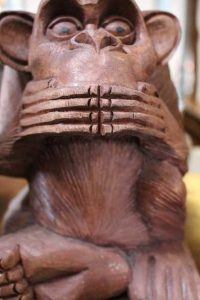Phrygian Mode – The Ultimate Guide
 Would you like to learn how to make your music exciting with the Phrygian mode?
Would you like to learn how to make your music exciting with the Phrygian mode?
You’re in the right place.
Why would you want to learn this special mode?
It adds an exotic dimension to your tunes that sounds fresh and vibrant.
Everything You Need To Know About The Phrygian Mode
In this tutorial, we’ll break down everything you need to know about the Phrygian mode.
To get you started, you need to become familiar with the sound of this exotic mode.
Take a few minutes to listen to Miles Davis playing Gil Evans’ Solea in the video below:
Phrygian Mode Application In “Solea” By Gil Evans
7 Tips To Go Deeper Into The Phrygian Mode
Now that you’ve taken a few minutes to watch the video above, let’s dive into the Phrygian Mode.
1. The Best Phrygian Mode Shortcut
 What’s the simplest way to understand the Phrygian mode?
What’s the simplest way to understand the Phrygian mode?
It’s realizing that the major scale gives you instant access to it.
Wait a minute. How does that work?
The Phrygian mode is simply the major scale starting at the 3rd note.
As a result, you’ll get a minor scale with a minor 2nd/flat 9th.
For example, if you want to learn what E Phrygian is like, just play a C major scale but start on E.
Let’s go a bit deeper by looking at the C major scale first. It’s made up of these notes:
C – D – E – F – G – A – B
Because Phrygian is the major scale starting on the 3rd note, we can build E Phrygian out of the key of C like this:
E – F – G – A – B – C – D
Now that you have the notes of this mode, what can you do with it? A lot of things.
However, merely playing these notes will not result in the Phrygian mode sound.
How do you make it sound as it should? Continue reading.
2. How Focusing On The New Root Leads To The Phrygian Mode Sound
 If you play the notes and chords of the Phrygian mode without focus, it’s still going to sound like C major.
If you play the notes and chords of the Phrygian mode without focus, it’s still going to sound like C major.
It doesn’t sound so exotic now, right?
How are you going to fix that?
You have to place focus on the new root.
From C major, we just outlined the mode as E – F – G – A – B – C – D. Therefore, our new root is E.
Placing emphasis on the 3rd note of the major scale will influence everything in the music from the melodies up to the chord progressions.
Let’s dig deeper into how this works by examining Gil Evans’ Solea.
3. We Analyzed “Solea” (And This Is What We Learned)
 Gil Evans’ “Solea” is a great example of modal jazz.
Gil Evans’ “Solea” is a great example of modal jazz.
It’s in D Phrygian and focuses on the Dm7 for much of its entirety.
In fact, Dm7 is so prominent that it works as a drone.
As you’ve heard from the video above, Miles Davis’s improvisations often feature resolutions from Eb to D.
Let’s take a look at the D Phrygian scale:
D – Eb – F – G – A – Bb – C
Inserting that half step movement from Eb to D creates that D Phrygian impression.
Using this mode sounds sophisticated. Yet it’s easy to understand once you know where to look for it.
4. How Barry Miles Uses The Phrygian Mode
 Barry Miles used to play with Al Di Meola a lot. Given Al’s Spanish and Latin music influences, Barry had to know the Phrygian Mode intimately.
Barry Miles used to play with Al Di Meola a lot. Given Al’s Spanish and Latin music influences, Barry had to know the Phrygian Mode intimately.
Watch how Barry shreds with Al using the Phrygian Mode in the jazz fusion track “Race With Devil On Spanish Highway”:
In this Al Di Meola classic, F# Phrygian is used in both the harmonic and melodic sense.
Here’s the F# Phrygian scale:
F# – G – A – B – C# – D – E
Much of the improv melodies are based on F# Phrygian: In fact, the opening riff and chord progression for the solos have a consistent F#m7 and G running.
The Phrygian mode is very effective as a different “color” of minor.
When used in a melodic sense, it gives a Flamenco-type of flavor to any music.
Do you want to give an Iberian tinge to your minor-sounding melodies? Use the Phrygian mode.
5. How To Use The Phrygian Mode Like Wayne Shorter
 Wayne Shorter’s “Speak No Evil” shows the classic way of using this mode in a more harmonic sense.
Wayne Shorter’s “Speak No Evil” shows the classic way of using this mode in a more harmonic sense.
The first 8 measures of “Speak No Evil” alternate between Cm7 and Dbmaj7 every 4 beats.
(4/4) | Cm7 | Dbmaj7 | Cm7 | Dbmaj7 | Cm7 | Dbmaj7 | Cm7 | Dbmaj7 | Cm7 | Dbmaj7 |
If we were to write out all the possible chords in C Phrygian, it would look like this:
Cm7 – Dbmaj7 – Eb7 – Fm7 – Gm7(b5) – Abmaj7 – Bbm7
Listen to Wayne Shorter’s “Speak No Evil” to see what I mean:
Since we derive the Phrygian mode from the 3rd degree of the major scale, the initial chord progression of “Speak No Evil” follows a C Phrygian harmony.
By the way, if you want to learn another great Wayne Shorter tune, I highly recommend “Footprints”.
Here’s a sample video of Footprints from our Jazz Improvisation Super System course:
Do you love the way David improvises over Footprints?
 He’s using a killer collection of power scales, modes, improvisation tricks, licks, and rhythms.
He’s using a killer collection of power scales, modes, improvisation tricks, licks, and rhythms.
This is the type of stuff every aspiring improviser must know.
If you want to learn all the amazing techniques David uses in the video than I highly recommend you pick up a copy of the Jazz Improvisation Super System.
Here’s a link to get instant access.
6. How Miles Davis Makes The Phrygian Mode Sound Hip
 Another example of using the Phrygian Mode in a more harmonic sense with “Nardis”.
Another example of using the Phrygian Mode in a more harmonic sense with “Nardis”.
To get an idea of how Miles does this, listen to the trio of Hank Jones, Ron Carter, and Tony Williams perform “Nardis”:
Like Wayne Shorter’s “Speak No Evil,” you will notice that Nardis doesn’t sound so Spanish at all.
However, the chord progression for the A section of “Nardis” is based on E Phrygian and goes like this:
(4/4) | Em7 | Fmaj7 | B7 | Cmaj7 | A7 | Fmaj7 | Emaj7 | Em7 |
Same as “Speak No Evil”, the Nardis chord progression gives off that Phrygian vibe without using the Phrygian mode for melodies. This gives off a differing, hip feel.
7. How To Solo Over Alt Chords With A Phrygian Mode Trick
 Here’s a really cool scale trick you can do with the Phrygian mode:
Here’s a really cool scale trick you can do with the Phrygian mode:
If you raise the 3rd of the Phrygian mode by a half step, you’ll get a new scale that sounds great over altered chords.
It’s called the Phrygian Dominant Scale.
In the video below, Steve teaches you how to play the Phrygian Dominant scale to make your solos sound sweeter:
Let’s put it into practice. When you encounter a G altered chord, think of using a G Phrygian with the 3rd raised.
To get to G Phrygian, look for the major scale where a G is the 3rd degree. If you know your major scales, the answer to that is Eb:
Eb – F – G – Ab – Bb – C – D
Now, start the scale on G and raise the 3rd from G a half step up.
This is how the G Phrygian Dominant should look like:
G – Ab – B – C – D -Eb -F
As Steve showed in the video, it works well over a G7 or a G altered chord.
With the Phrygian Dominant Scale, altered chords don’t seem pesky to improv over anymore.
The Ultimate Guide To Jazz Improv Mastery
 Are you still embarrassed about how you improvise? Do your solos sound like a child banging aimlessly on a keyboard?
Are you still embarrassed about how you improvise? Do your solos sound like a child banging aimlessly on a keyboard?
Sure, thoughtless improv might be okay in the practice room. However, it’s really inefficient when you’re on stage or in a recording session.
And unfocused improv is just embarrassing and feels horrible to play.
 The great news is that the Jazz Improvisation Super System provides everything you need to learn how to solo like an authentic jazz master.
The great news is that the Jazz Improvisation Super System provides everything you need to learn how to solo like an authentic jazz master.
The Jazz Improvisation Super System features the best tips and tricks from keyboard virtuoso, David Garfield.
David has worked with the best in the jazz world such as George Benson, David Sanborn, The Rippingtons, and Earl Klugh.
This course will bring David’s secrets right at your fingertips.
Inside the Jazz Improvisation Super System, you’ll discover:
- How the best players really use scales to create beautiful melodies & improvisation.
- How to simplify complex chord progressions so you can easily play every chord you see.
- David’s trick for playing confidently over fast chord changes.
- And much more.
I hope that you enjoyed learning about the Phrygian mode in this tutorial. If you have any questions or anything to add to this tutorial, feel free to leave a comment below. I also recommend you check out our additional lessons on lydian and phrygian too.
As usual, I’m always here to help you be the musician of your dreams. Thanks.
PHOTO: “[sziget festival 2009 – day 4] al di meola” by opethpainter is licensed under CC BY-NC 4.0
